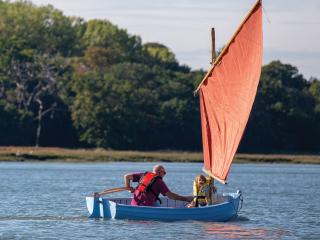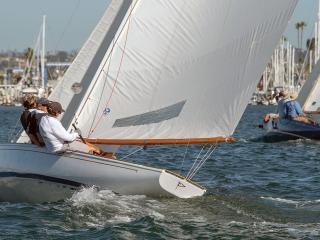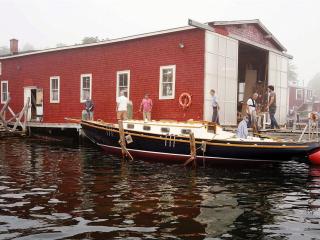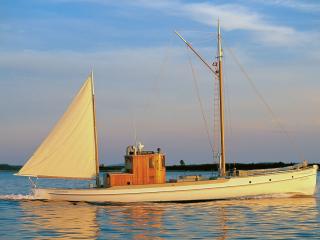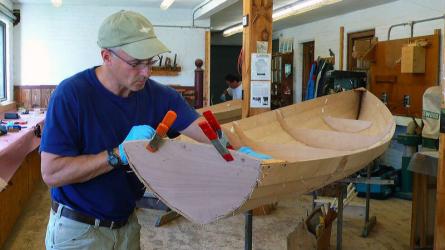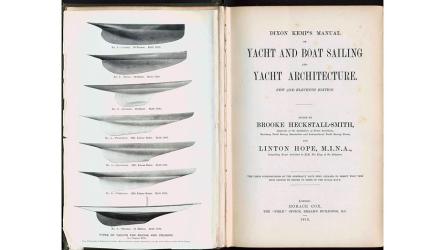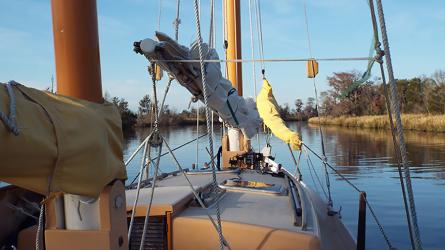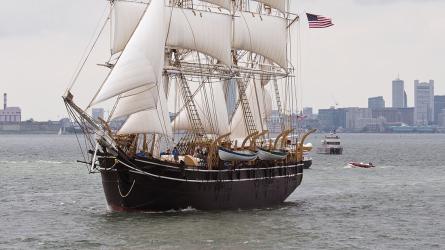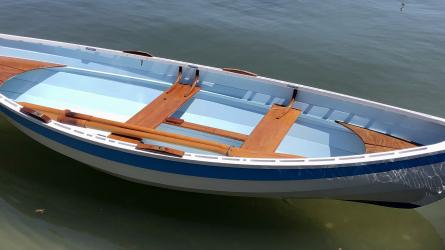July / August 2019
The Magic of MERLIN
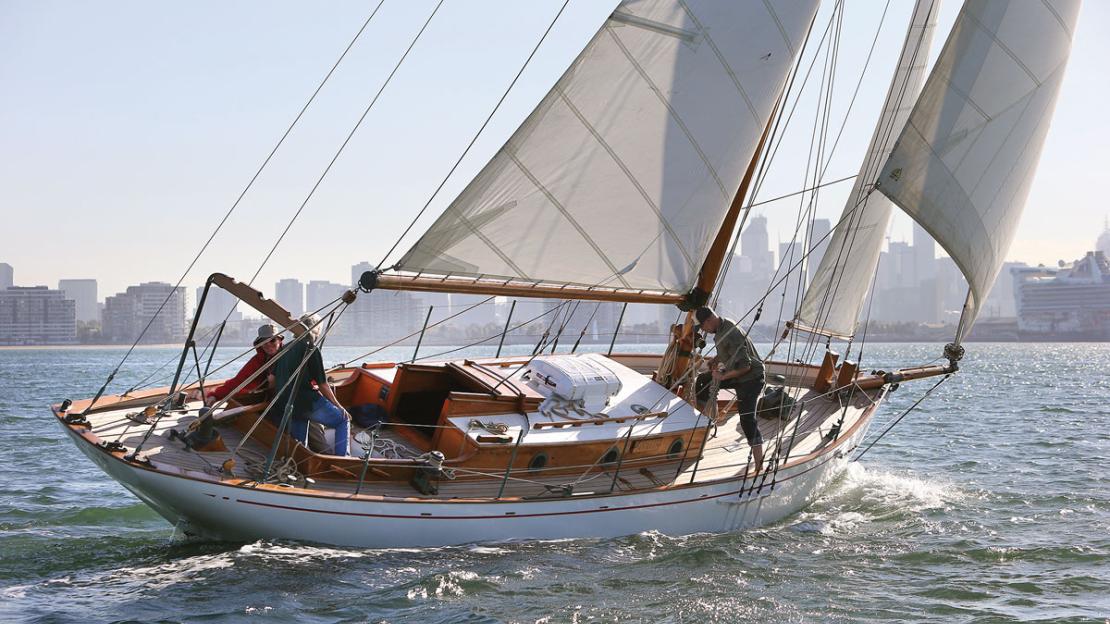
After her restoration, the immaculate gaff cutter MERLIN, at 85 years old, sails on a cloudless autumn morning on Port Phillip Bay in Melbourne, Australia.
Like seductive sirens, certain beautiful vessels invariably attract the roving eye of a sailor. Through their sensuous sheerlines, the balanced symmetry in their curving bows and counter sterns, and the elegant proportions of their rigs, they sing the kind of alluring songs that cause old salts to glow in remembrance of times long past, when youth overwhelmed cold common sense and we surrendered to their irresistible charms. MERLIN, a lovely little teak-built British cutter, is just such a yacht. At the Australian Wooden Boat Festival in Hobart, Tasmania, more than 500 gleaming boats and launches lay before me under a cloud of dazzling, multicolored bunting, and yet MERLIN was the one whose siren call most enchanted me.
She is certainly well-named, for Merlin was the ancient wizard of the Britain of Arthurian legend, a Druidic sage and shape-shifter, and the weaver of spells who created the magic of Camelot. I could see at once that like her namesake this cutter was a boat with a commanding presence. She has character, personality, and the kind of lovely, mellow patina that comes only after long experience of deep-sea voyaging. MERLIN is that rarity, a classic English hard-weather cruiser from the 1930s, a tough little survivor that has twice made safe global circumnavigations and logged innumerable sea miles over the course of her 85 years afloat.
MERLIN made many adventurous ocean voyages under the ownership of an English yachtsman, Lord Stanley of Alderley, who bought her in the spring of 1937. In the book he wrote about his experiences, Sea Peace, he devoted two chapters to MERLIN and described her as “the finest ship I ever owned.” His lordship had 12 yachts in his 35 years under sail, but MERLIN was undoubtedly his favorite. He and a paid hand named Parsons took her out in “the most beastly weather” and were unstinting in their praise for her stout seakeeping capabilities. In 1934, Lord Stanley had watched her being built to Lloyd’s 18A classification by the top-notch craftsmen at the Philip and Son shipyard at Dartmouth in Devon. He therefore knew that nothing but the finest materials had gone into her construction: the best Burma teak in her planking and deck, English oak in her keel and in her grown double-sawn frames, teak and oak in her saloon, and high-grade naval brass in her fittings. Designed for G.S. Burge by A. Letcher of Capt. O.M. Watts, the London ship’s chandler, she was 36' 6" LOA, 29' 3" LWL, 9' 6" beam, and 6' 1" draft. She displaced 11 tons and carried a 700-sq-ft Bermudan rig on Sitka-spruce spars.
To read the rest of this article:
Click the button below to log into your Digital Issue Access account.
No digital access? Subscribe or upgrade to a WoodenBoat Digital Subscription and finish reading this article as well as every article we have published for the past 50+ years.
ACCESS TO EXPERIENCE
2-for-1 Print & Digital Subscription Offer
For this holiday season, WoodenBoat is offering our best buy one, get one deal ever. Subscribe with a print & digital subscription for $42.95, and we’ll give you a FREE GIFT SUBSCRIPTION to share with someone special.
1 YEAR SUBSCRIPTION (6 ISSUES)
PLUS ACCESS TO MORE THAN 300 DIGITAL BACK ISSUES
PRINT+DIGITAL $42.95
Subscribe
To read articles from previous issues, you can purchase the issue at The WoodenBoat Store link below.
 Purchase this issue from
Purchase this issue from
